PRESTO PLANS
Sent straight to your inbox
CLICK HERE TO ACCESS
Sign up to receive 10 ready-to-use ELA resources your students will love!
10 FREE ELA RESOURCES
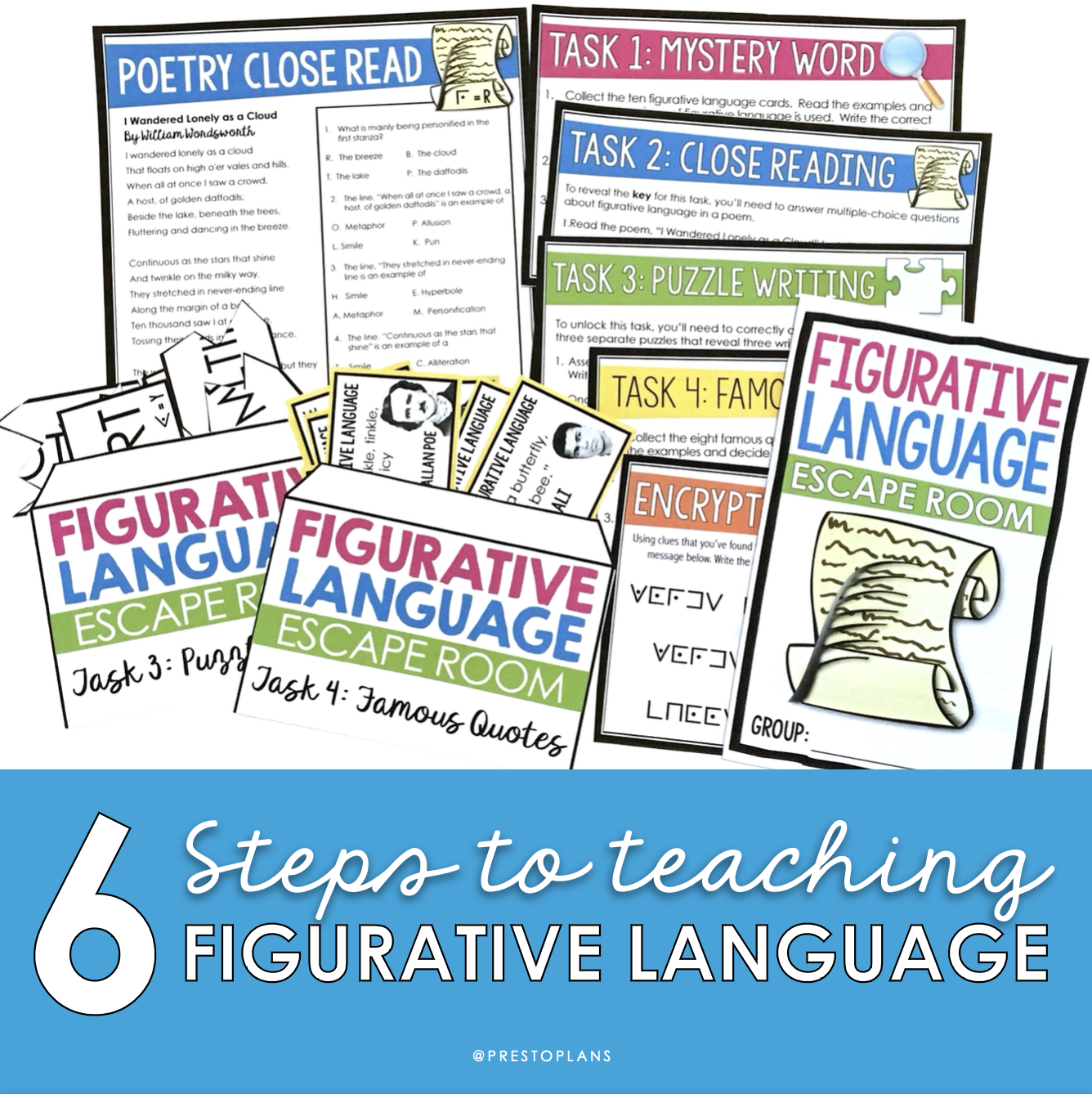
Teaching Figurative Language in Middle School in 6 Steps
Teaching students how to identify, analyze, and evaluate the use of figurative language in texts can help them grow as readers, as well as writers. But when it comes to the actual challenge of how to teach figurative language, it can be tricky to know where to begin! That’s why I’ve come up with a tried-and-true process for teaching figurative language in middle and high school ELA, with each step building on the next.
Step 1: Direct Instruction
Some people prefer teaching figurative language in the context of a wider unit of study, such as poetry or reading comprehension. I prefer a slightly different approach to scaffold the learning for middle and high school students. Teaching figurative language to younger teens can be tricky, and I find it really helps to make the concept as clear as possible through direct instruction.
With this in mind, I like to introduce just a few terms at a time – too many can be overwhelming! In my experience, students appreciate knowing the definition of various figurative terms and working through a few different examples to support their understanding. I find that introducing five to seven terms at a time is a good amount – this way students are more likely to remember what each of the figurative language examples are.
Step 2: Provide Context
It’s my belief that students learn best when they can make real-world connections to their classroom lessons. I find that bringing relevant examples – including contemporary music, advertisements, poetry, and song lyrics – into the ELA classroom can help to make figurative language come alive for students.
One activity I love for teaching figurative language in middle school ELA is Literary Lyrics. First, a brief presentation reminds students of different types of figurative language, as well as real-life examples from popular songs (like the use of metaphor in “Ocean Eyes” by Billie Eilish). Next, students work alone or in groups to examine clips from several familiar songs, including “As It Was” by Harry Styles, “Diamonds” by Rihanna, and “Anti-Hero” by Taylor Swift. After they have read the provided lyrics, they use a graphic organizer to label examples of metaphor, simile, hyperbole, personification, alliteration, pun, oxymoron, and more!
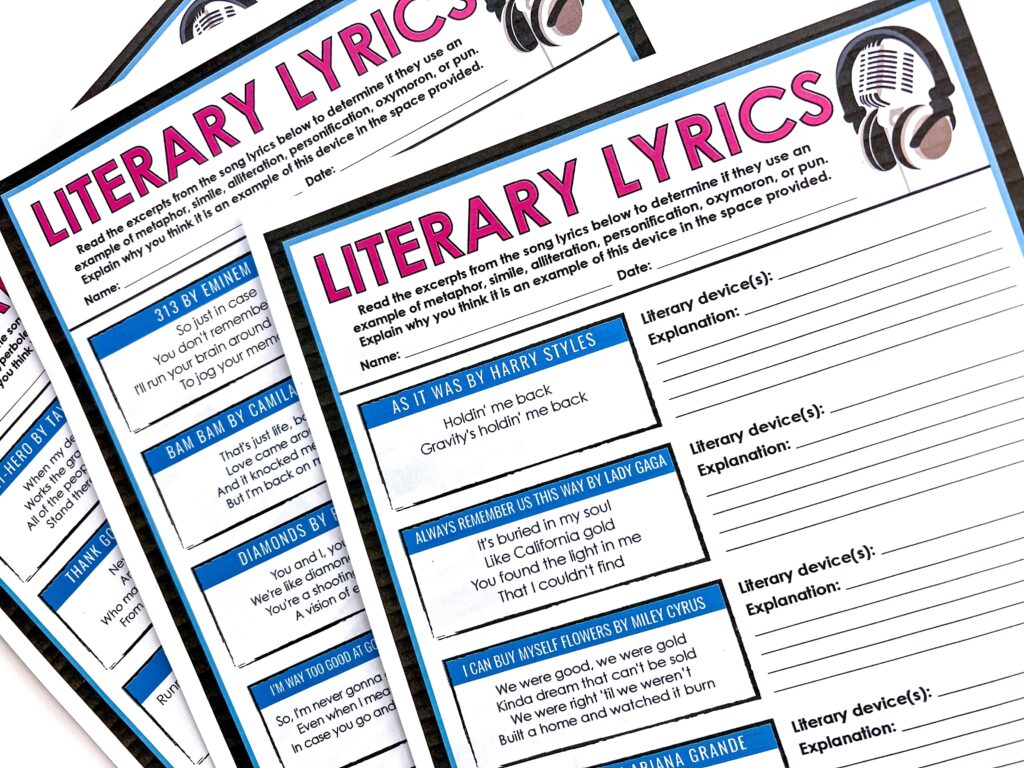
Step 3: Posters & Visual Aids
There’s a growing body of evidence to support the idea that the classroom environment is a sort of “third teacher.” With this philosophy in mind, posters and visual aids can provide powerful cues to support a greater understanding of figurative language. Figurative Language Review Cards can be printed as either posters or flash cards. They can be used in a variety of different ways, including:
- Tabletop references for small groups of students
- Study tools to help students review ahead of quizzes and tests
- Grab-and-go resources to support students as they engage with figurative language during novel studies, poetry activities, and other learning tasks
- Vibrant bulletin board displays
Step 4: Practice Identifying Figurative Language
Once students have a fairly solid grasp of figurative language, it’s time to put their learning into practice! You may plan to have your class apply their understanding to a specific unit of study, such as a novel or a short story. Alternatively, you might like to have your students identify and track examples of figurative language “in the wild.” As they come across various literary techniques in their personal or free-choice reading, they can log their findings in a personal journal, or even on a shared bulletin board.
Activity or experience-based tasks are also engaging ways to keep students’ attention as they explore figurative language techniques. Here are two of my favorites!
FIGURATIVE LANGUAGE ESCAPE ROOM
A classroom escape room activity can be a great way to review and reinforce challenging concepts while incorporating movement. To begin, students should have a solid understanding of common figurative language forms. Then, they work in small groups to crack codes, complete puzzles and engage in activities related to figurative language. Stations can be set up around the room. Then, as students move to various locations, they can unlock mystery and code words to “escape” the challenge!
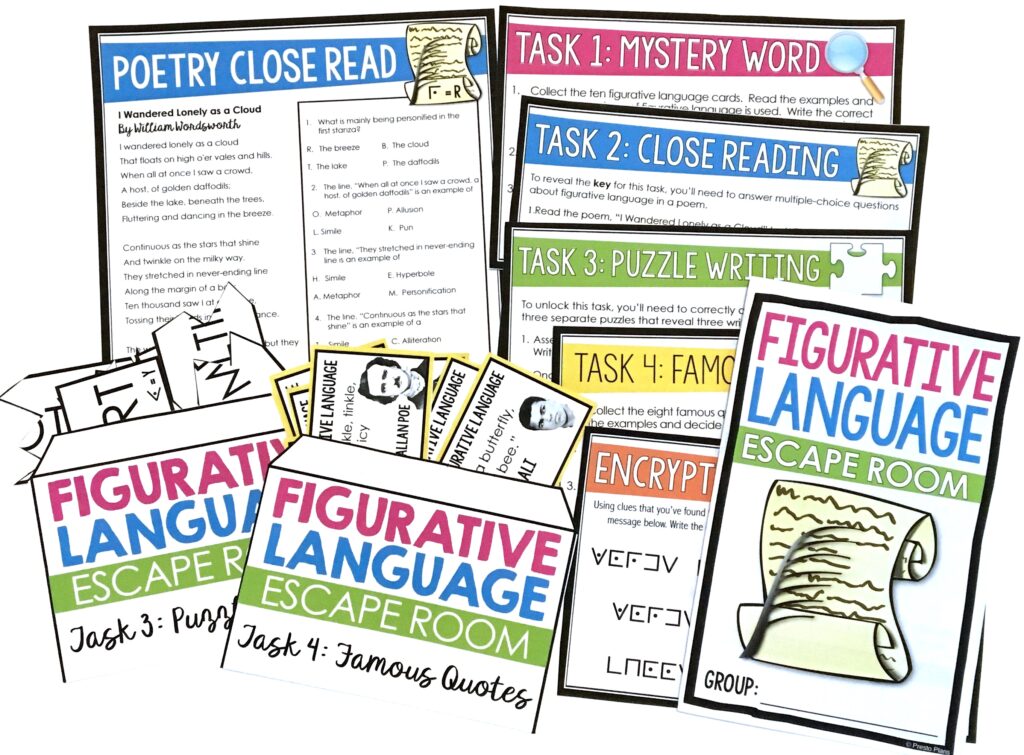
INTERACTIVE READING CHALLENGE:
Interactive reading challenges are another way to make figurative language fun and engaging for middle and high school students. One activity I really love is the Battleship-inspired Figurative Language Reading Challenge. In this activity, students apply their understanding of figurative language to locate the coordinates of enemy submarines! Students also have a lot of fun with the Escape the Observatory task. This requires them to identify personification, puns, hyperbole, and alliteration. What I love most about this exercise is how flexible it is. It can be set up as a single lesson, or a series of five bell-ringers spread out over the course of an entire week!
Looking to try out a figurative language activity in your middle school ELA classroom? Check out this FREE Figurative Language Escape Challenge!
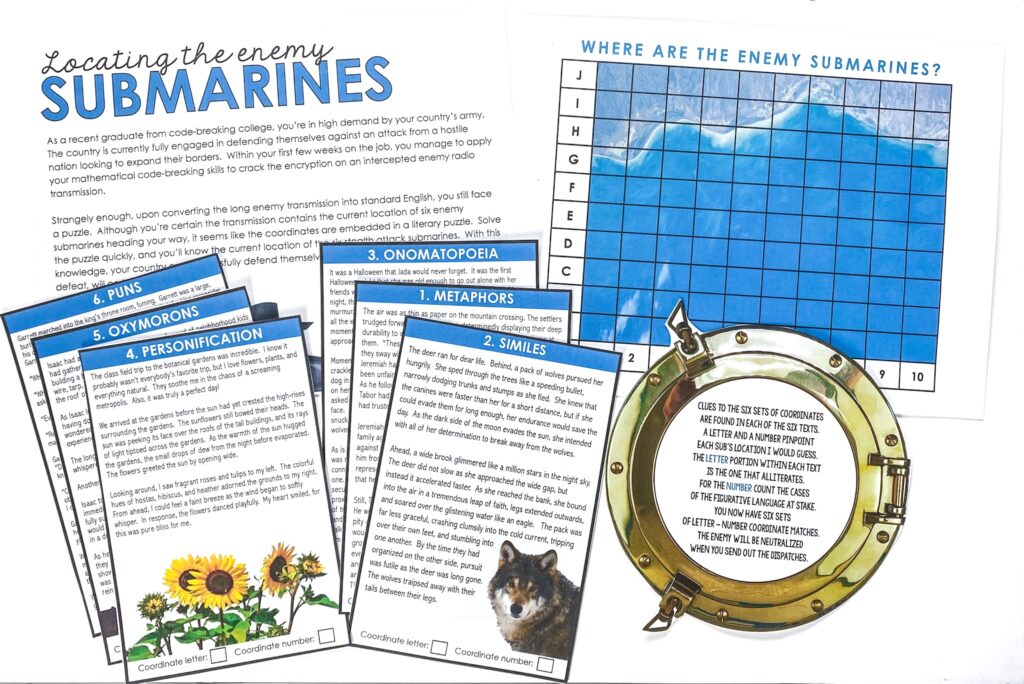
Step 5: Assessment
When teaching figurative language in middle school, a quick quiz can be a very useful way to check for understanding. I find quizzes are most effective when they ask students to apply their knowledge of figurative language to a variety of different examples. The ready-to-print Figurative Language Quiz includes ten quotes from poems. As they work through each example, students must label the type of figurative language used, and explain its meaning.
While you can always give a quiz in the traditional style, this resource can also be used in less conventional ways to evaluate students’ understanding. Here are some of my favorite ways to make the Figurative Language Quiz work in any middle school ELA classroom:
- EXIT SLIP – Have students complete some or all of the questions at the end of the lesson. Instead of grading the quizzes, use the papers to quickly gauge which students have a solid grasp on certain terms, and target areas where more practice may be needed.
- COLLABORATIVE ASSESSMENT – Students can work in pairs or small groups to complete the quiz together. This is especially helpful for students who like to “talk out” their responses.
- CUT IT UP – Cut the questions out and have each student answer a different one. You could also have each student randomly draw a certain number of questions from a bucket (putting back any duplicates)! This task can be differentiated by increasing or reducing the number of questions each student has to answer.
- FRONT HALF/BACK HALF – If your students normally sit in pairs or small groups, you may want to have half of your class complete the front of the quiz, and the other half complete the back! This keeps everyone’s eyes on their own papers.
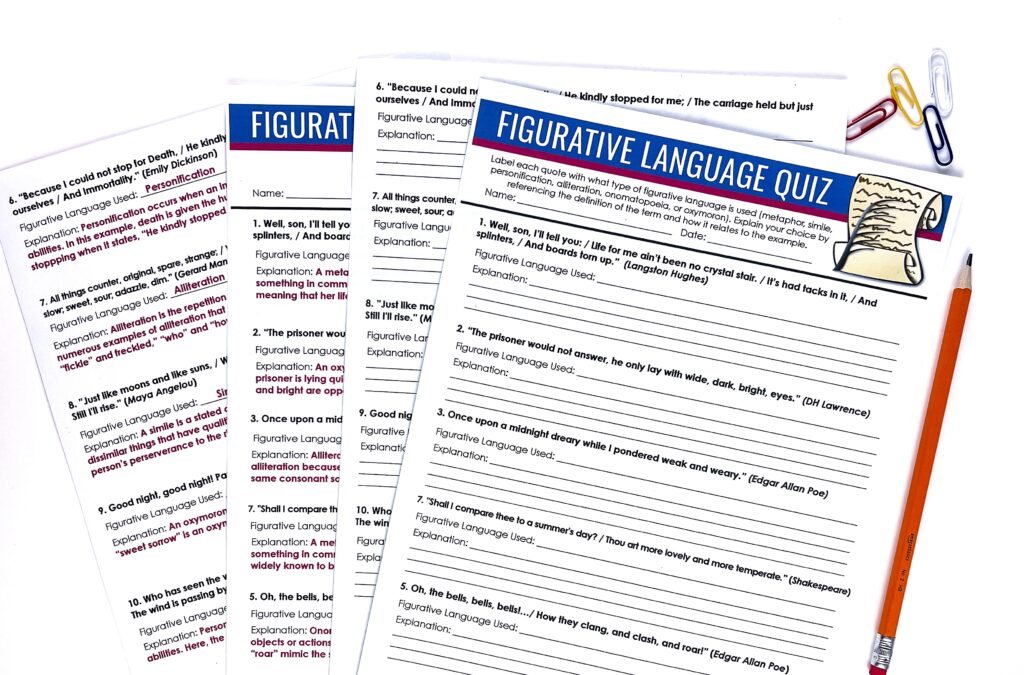
Step 6: Putting Figurative Language into Practice
Finally, it’s great to give students the opportunity to practice using figurative language in their own writing. One way to start is to have students revise an existing piece of short writing – perhaps a descriptive paragraph or a short narrative passage – and add an element of figurative language to it. Alternatively, they can create an entirely original composition – perhaps a poem, song, or short story – that incorporates figurative language. You can also extend understanding by having students identify and explain their choices, and how they illustrate their meaning.
There you go! I hope these ideas give you some fresh ways to approach teaching figurative language in middle and high school ELA! Looking for more creative ideas to support your students with poetry and figurative language? Check out my post on 10 Ways to Bring Music into the ELA Classroom!







Search the blog for what you are teaching
GIVEAWAYS
sent straight to your inbox!
share this post